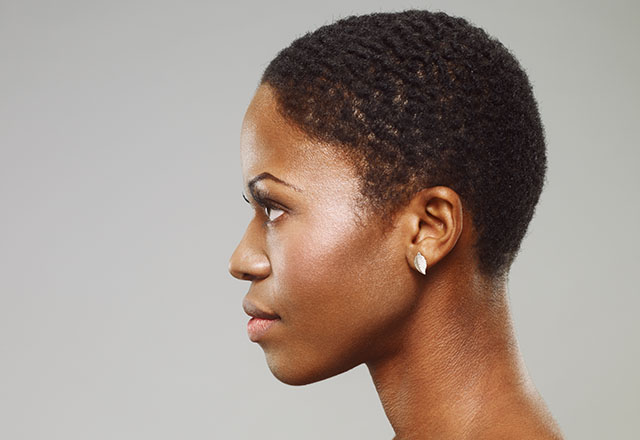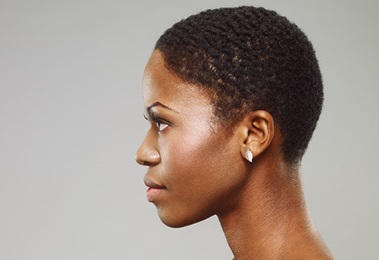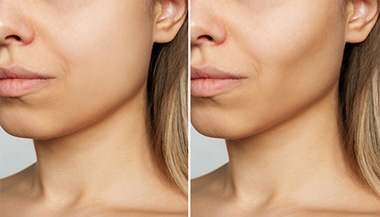Chin Implants
The chin is an essential aspect of the face, and a person may desire a chin implant to achieve a more defined or prominent contour of the chin to improve his or her appearance.
What You Need to Know
- Chin implants are made of a safe, pliable material and come in a range of sizes and shapes to fit a person’s facial structure and the plastic surgeon’s objective.
- Chin implants are just one way for a plastic surgeon to improve the appearance of a person’s chin. Other procedures include moving or reshaping the bones and using liposuction to remove excess fat in the area.
- Visible scarring is minimal in chin implant surgery since the surgeon makes the incisions either under the chin or inside the mouth.
- It is important for plastic surgeons to approach cosmetic procedures of the face in a holistic manner, considering the balance and harmony between each area of the face and its proportions.
Making the Decision for Chin Surgery
If you are considering chin surgery, here’s what to expect when you meet with a plastic surgeon:
- During a preliminary consultation, the surgeon will take a thorough medical history, as well as assess the person’s mental and emotional attitudes toward the surgery. A positive attitude and realistic expectations are crucial to the success of the surgery.
- The surgeon or a staff member will take photographs so the surgeon can study the person’s facial features and chin.
- The surgeon will carefully assess the person for surgical risks, especially those related to conditions such as high blood pressure, a tendency to scar, smoking and any deficiency in blood clotting.
- If a person, in consultation with the surgeon, elects to proceed with surgery, the surgeon will describe:
- The type of technique most likely to get a good result
- The type of anesthesia recommended
- The surgical facility where the procedure will take place
- Any additional procedures recommended to optimize results
Understanding Chin Surgery
Each patient’s individual needs and features are considered before their surgery. Here is a general overview of the procedure:
- Once the person is under anesthesia, the surgeon begins by making an incision either in the natural crease line just under the person’s chin or inside the mouth where gum and lower lip meet.
- By gently stretching this tissue, the surgeon creates a space where an implant can be inserted. This implant, made of synthetic material that feels much like natural tissue normally found in the chin, is available in a variety of sizes and shapes. This allows custom fitting of the implant to the configurations of the patient’s face.
- After implantation, the surgeon uses fine sutures to close the incision. When the incision is inside the mouth, no scarring is visible. If the incision is under the chin, the scar is usually imperceptible.
What to Expect After Chin Surgery
- Immediately after surgery, the surgeon usually applies a dressing that will remain in place for two to three days. The person will experience some tenderness, and the surgeon will prescribe medications to help with post-operative discomfort.
- Chewing will probably be limited immediately after chin surgery, and the person may need to follow a diet of liquids and soft foods for a few days after the procedure. Most patients feel a stretched, tight sensation after the surgery, but this usually subsides in a week.
- After approximately six weeks, most swelling will be gone, and the person can start to see the results of the procedure. The surgeon may recommend avoiding rigorous activity for the first few weeks after surgery. Normal activity can be resumed after approximately 10 days.
Note: These are general guidelines only. Individuals respond differently to surgery and recovery. Please ask your plastic surgeon to help clarify what you might expect after your surgery.
Follow-Up Care
Follow-up care is vital to monitor healing. Any unusual bleeding, swelling, fever or other symptoms should be reported to the surgeon immediately. It is essential that patients keep all follow-up appointments with their surgeon.
Other Cosmetic Surgery for the Chin
Chin implants are just one way a plastic surgeon can help a person achieve a more attractive chin and profile. Here are some others:
Mandibular advancement: Moving the bone of the chin forward to improve the appearance of a receding chin involves the surgeon making an incision inside the mouth and repositioning the facial bones. The procedure, depending on the extent of the work, takes from less than an hour to approximately three hours.
Chin reduction surgery: The surgeon makes incisions either in the mouth or under the chin, then sculpts the bone to a more pleasing size or shape.
Liposuction:Removing excess fatty tissue below the chin can help redefine the chin, profile or neckline.
Facelift or neck lift: These procedures can improve the look of the chin by tightening the muscles of the neck.
Orthognathic (jaw) surgery: When severely crooked teeth or birth defects in the structure of the jaw itself are contributing to a receding or malformed chin, surgery of the jaw can improve the form and function of the lower face and greatly enhance appearance.
Seminar Saving Face: Advice to Help Freshen Aging Skin

Age-related changes to the face don’t have to be noticeable. Learn about surgical and nonsurgical options to address signs of aging from Dr. Kofi Boahene.





